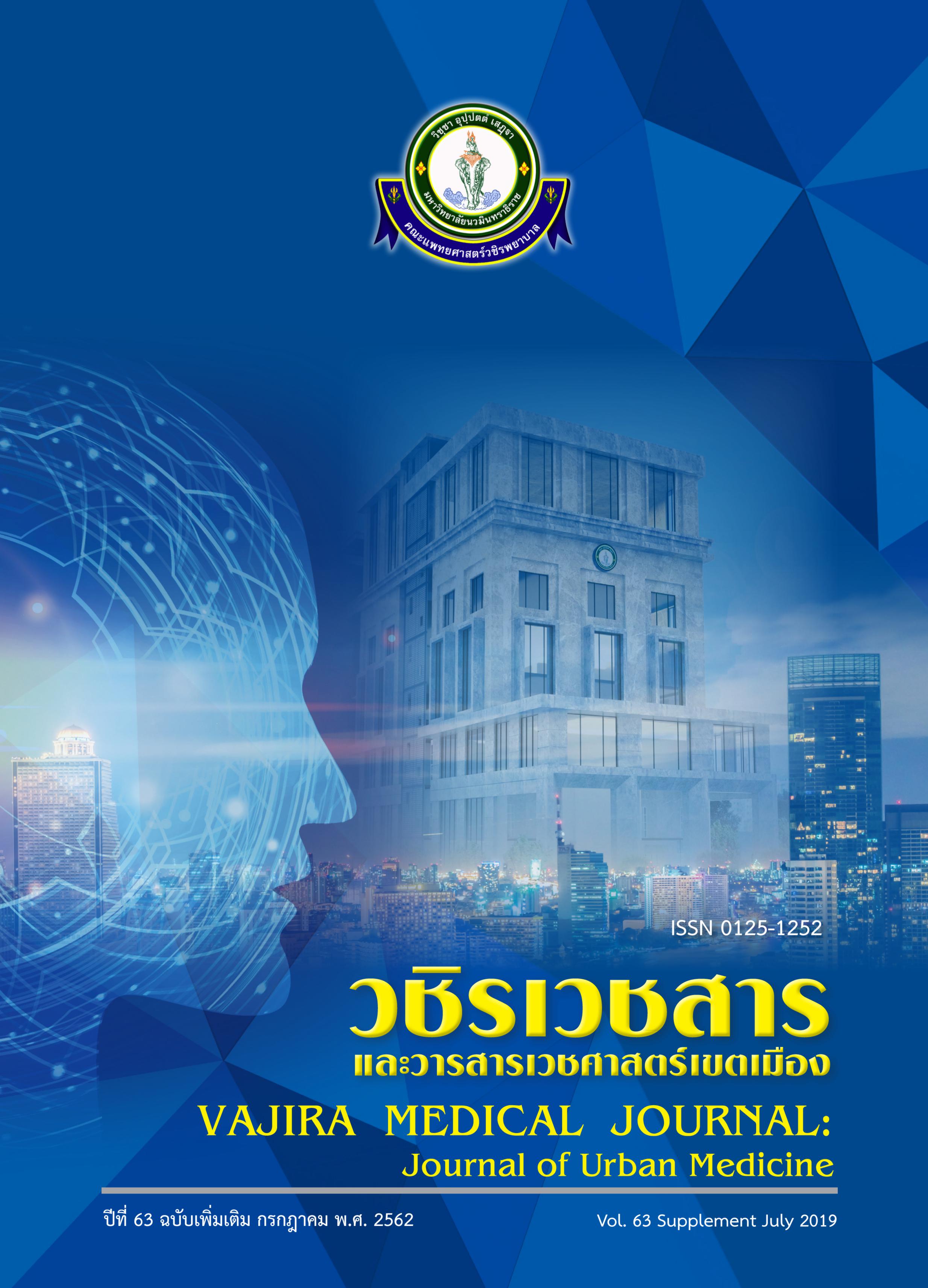Learning Curve Evaluation of Endotracheal Intubation in High-fidelity Manikin.
Main Article Content
Abstract
Objective: To construct learning curve of endotracheal intubation procedure and to determine the minimal attempts of performing intubation in high-fidelity manikin in order to reach an acceptable success rate (90% probability of successful intubation).
Method: We designed this longitudinal study. The participants were 78 fifth-year medical students with no previous experience in endotracheal intubation. All subjects were taught using conventional lecture, animated video and manikin demonstration prior to perform this procedure in high-fidelity manikin. The primary outcome was the number of intubation that each subject performed to archive 2 consecutive successful intubations. By using generalized linear mixed model, the learning curve was constructed and further indicated the minimal number of attempts to reach an acceptable success rate. The secondary outcomes were pressure applied to tongue and upper incisors.
Results: Participants performed 2 to 8 intubations. However, learning curve indicated that 90% and 100% probability of successful intubation required at least 3 and over 8 attempts, respectively. The average time required to intubation was 103.6 Seconds. The average pressure applied to tongue and upper incisors were 30.9 and 51.3 Newtons, consecutively.
Conclusion: We apply group level of learning curve to show the variation of a group of learners’ paths through a given learning domain and therefore can determine the minimum attempts. Nevertheless the individual level of learning curve should be further studied to make manifest a single person’s progress toward his/her competence.
Article Details
References
2. Owen H, Plummer LJ. Improving learning of a clinical skill: the first year’s experience of teaching endotracheal intubation in a clinical simulation facility. Med Educ 2002; 36:635-42
3. Howells TH, Emery FM, Twentyman JEC. Endotracheal intubation using a simulator :an evaluation of Laerdal adult intubation model in the teaching of endotracheal intubation. Br J Anaesth 1973; 45:400-2
4. Kluger AN, DeNisi A. The effect of feedback interventions on performance. Psychol Bull 1996; 119(2):254-84
5. Wulf G, Shea CH. Frequent feedback enhances complex motor skill learning. J Mot Beh 1998; 30(2):180-92
6. Akira N, Ron K, Vinay N. Does Simulation improve patient safety? : self-efficacy, competence, operational performance and patient safety. Anesthesiol Clin 2007; 25:225-36
7. Bould MD, Crabtree NA, Naik VN. Assessment of procedural skills in anaesthesia. Br J Anaesth 2009; 103(4):472-83
8. Rajagopaol V, Dhandapani S. Evaluating learning curves for intubation in a simulator setting: a prospective observational cumulative sum analysis. Eur J Anaesthesiol 2012; 29:544-47
9. Gaszynski TM. Force applied by the laryngoscope blade onto the tongue during intubation attempts: a comparison between Macintosh, Airtraq and Pentax AWS in a mannequin study. Eur J anaesthesiol 2011; 28:463-4
10. Nakanishi T, Shiga T, Homma Y, Koyama Y, Goto T. Comparison of the force applied on oral structures during intubation attempts by novice physicians between the Macintosh direct laryngoscope Airway scope and C-MAC PM: a high fidelity simulator-based study. BMJ open [internet].2016[cited2017 May 3]; 6:e011039. Available from: https://bmjopen.bmj.com/ content/6/5/e011039
11. Goto T, Koyama Y, Kondo T, Tsugawa Y, Hasegawa K. A comparison of the force applied on oral structures during intubation attempts between the Pantax-AWS airway scope and the Macintosh laryngoscope: a high-fidelity simulator-based study. BMJ open[internet].2014[cited2017 May 3]; 4:e006416. Available from: https://nrs.harvard. edu/urn-3: HUL.InstRepos:13347425
12. Fukuda T, Sugimoto Y, Yamashita S, Toyooka H, Tanaka M. Forces applied to the maxillary incisors during tracheal intubation and dental injury risks of intubation by beginners: a manikin study. Acta Anaesthesiol Taiwan 2011;49:12-5
13. Kyotokagaku.com [Internet]. Kyoto: Difficult Airway Management Simulator Assessment System. [cited2017May3]. Available from: https:// www.kyotokagaku.com/products/detail01/ mw11.html
14. Ericsson A, Pool R. Peak secrets from the new science of expertise.1 st ed. Boston: Houghton Mifflin Harcourt;2016
15. Fontijn-Tekamp FA, Slagter AP, Van DER Bilt A, et al. Biting and chewing in over dentures, full dentures and natural dentitions. J Dent Res 2000; 79:1519-24

